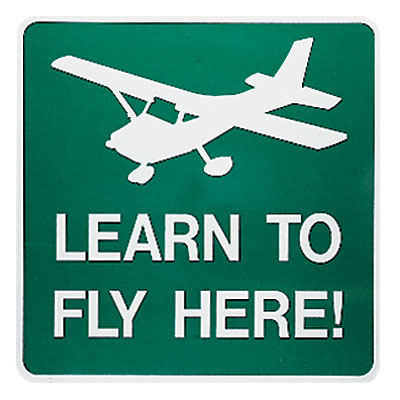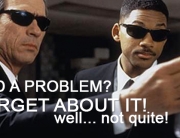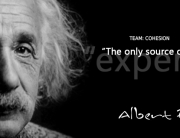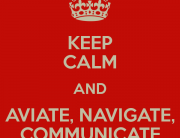“Without Knowledge, Skill cannot be focused. Without Skill, Strength cannot be brought to bear and without Strength, Knowledge may not be applied”
– Alexander the Great’s Chief Physician
The untimely tragedy of the Air France Flight 447(1) has left the aviation community baffled, and later scandalized over the shocking revelations shared by the investigation. What went wrong? A perfectly airworthy airplane, with two perfectly working engines, ended up lost for years and became one of the greatest mysteries of aviation. With answers, however, came more questions, and as pilots all over the world tried to make sense of it all, the dreadful truth came out: the lack of training on a procedure as seemingly simple as a stall recovery led to the 3 minutes of horror and untimely demise of all the souls on board of flight 447.
A few years later, another tragedy puzzles the world of aviation. Despite the striking resemblance with the Air France Flight 447 story, Colgan Air Flight 3407(2) highlights a completely different an inherent problem with the world of commercial aviation. Although the NTSB attributed the crash and death of all the people on board the Dash 8 Q400 commuter to pilot error and more importantly poor training, Colgan Air responded to the NTSB report in a letter: “They [the pilots] knew what to do in the situation they faced that night a year ago, had repeatedly demonstrated they knew what to do, and yet did not do it. We cannot speculate on why they did not use their training in dealing with the situation they faced.” And so, despite recurrent training and demonstrated knowledge of the necessary skills, the crew of Colgan Air Flight 3407 failed to perform the critical yet simple stall-recovery maneuver which would have resulted in a safe outcome.
The same year as the Colgan Air accident, another airliner crashed near New York City. But against all odds and while quickly running out of options, the legendary Captain Chesley Sullenberger accomplished the extraordinary and ditched his Airbus A320 in the Hudson River after a total power loss following a fatal bird-strike. His training, knowledge, and above all – clock-work precision in his performance – saved the lives of all the souls on board the airplane and resulted in no fatalities onboard US Airways Flight 1549(3). The Guild of Air Pilots and Air Navigators awarded the entire flight crew of Flight 1549 a Master’s Medal(4). The medal is awarded rarely, and only for outstanding aviation achievements.
“The reactions of all members of the crew, the split second decision making and the handling of this emergency and evacuation was ‘text book’ and an example to us all. To have safely executed this emergency ditching and evacuation, with the loss of no lives, is a heroic and unique aviation achievement. It deserves the immediate recognition that has today been given by the Guild of Air Pilots and Air Navigators.” – Master of the Guild.
In the light of these events and reports being made available to the aviation community, a question remains. What can we – as pilots – learn and apply in our own jobs, every day, every flight? The truth is simple:
Training + Performance = Safety.
Captain Fantastic(5) is the title given by the media to Richard de Crespigny, the captain who saved 466 lives on failed Qantas flight QF32. He safely landed his crippled Airbus A380 after losing two engines and many critical systems due to a catastrophic turbine explosion.
De Crespigny mentioned in an interview afterwards(6), “While landing the plane, we had to deal with more than 60 separate system failures. The wing was cluster-bombed. The aircraft had phenomenal damage in all systems.”
It’s easy to see why he was awarded such a title. But the reason behind the safe landing of QF32 was how the captain and his crew handled the emergencies. “It was a flight that you could never train for. You might practice one or two emergencies, not 60,” continues de Crespigny. So what was their secret? “I was supported by an extraordinary crew with lots of experience.” Their “flying background, check and training culture, automation and simulation, [and] human factors”(7) all came together in the time of greatest need.
Sadly the story is not the same everywhere. In this modern world of technology, one is often prone to relying on the available tools to complete the required tasks at hand. A brand new airliner like the A380 offers so many safety redundancies, performance-enhancing tools and reduced-load management systems that it is now technically feasible to train a pilot from ab-initio to the right seat of an airliner without having the pilot pay his proverbial dues flying smaller aircrafts to gain experience first. But where does this leave us?
MacLean’s Magazine published a cover story called Cockpit Crisis(8), relating to the number of high profile incidents and accidents in the airline industry pertaining to pilot training. With the rapid growth of the airline business in the world and the plethora of low-cost carriers opening their doors to brand new pilots, what can we do to ensure a constant reliability in the training of the new pilots? One of my favorite quotes, and I wish I knew who said it, “We do not rise to the level of our expectations. We fall to the level of our training.”
But what if, in some instance – like the Air France 447 crash – training is not enough? Sometimes, there are truly no substitute for experience. The head of the Air Canada Pilot Union tells MacLean’s in Cockpit Crisis, “It almost never happens in real life like it happens in a simulator. It’s almost never textbook in my experience. You practice it one way and when something finally does happen, it’s always way more nebulous and insidious. […] There’s something that you just can’t simulate,” he says. “It’s gained through experience.”
Training does not only include pages of a manual, or the simulator sessions. Training also includes a strong commitment to developing and maintaining a high standard of safety, and a complete commitment to Crew Resource Management – which involve all the aspects of multi-crew and TEAM-based decisions and actions. The industry is slowly shifting pace, understanding the true value of the individual behind the title. A pilot is a pilot is a pilot. A crew-member, however, truly takes part in the synergy of the team work, and the symbiotic environment of the technology versus man. Next time you climb in the cockpit of an airplane, ask yourself this question: are you ready, capable and properly trained to deal not only with the airplane you operate, but also with the crewmembers in your team? Once CRM mentality is ingrained in a pilot, one mission is accomplished. The next step is imparting the proper knowledge and skills to make sure that in any situation that might arise, the pilots are ready to perform and exceed standards and expectations.
Once training is completed, it is the duty of all pilots to perform up to the standards established by the training establishment, regulating agency and their employer. Performance, however, can be affected by a number of factors which may or may not be in control of the pilot or the employer. For example: Stress and fatigue are two main players in the performance abilities of a pilot. Whether they stem from a situation outside or work or are induced by a high-workload or schedule, stress and fatigue will often be present in a pilot’s environment. The ability to understand, recognize and deal with those factors are both the pilot’s and the employer’s responsibility. A pilot should know his or her limit and refuse to fly in an overtired state. Did you know that after 17 hours of sustained wakefulness cognitive psychomotor performance decreases to a level equivalent to the performance impairment observed at a blood alcohol concentration of 0.05%. If you get pulled over with this amount of blood alcohol concentration, you will be charged for driving under the influence. After 24 hours of sustained wakefulness cognitive psychomotor performance decreased to a level equivalent to the loss of performance observed at a blood alcohol concentration of roughly 0.10%. You are effectively flying drunk.
Other key factors in performance include emotions and relationship-induced stress. By this I mean the synergy between you and your crew members, and how well you adapt and work with different personalities and characters. It is very important at this stage for a pilot to be completely aware and in control of their own reactions. To help with this, a lot of resources have recently been made available concerning Emotional Intelligence, and what it means in a high-stress, high-demand team environment. The Institute for Health and Human Potential offers a short free online test which allows you to understand your own reactions to the events and people around you, and thus readjust them in a way which will increase performance during the operation of an airplane. Remember: Lack of performance degrades safety. Whether it’s stress, fatigue, or otherwise induced, it plays a crucial role in the operations every day.
When a crew is able to use their training to maintain a proper performance level, the safety factor of the flight increases exponentially. Of course, nothing will ever replace experience, but strict adherence to set procedures and a high level of system knowledge will more often than not get you out of a sticky spot. Training starts with your first step in flight school, and never stops for the rest of your career. Be it every two years, yearly or even every 6 months, you will be required to train and demonstrate proper knowledge and skill levels. But aside from that which is imparted to us during recurrent training, it is also our duty, as pilots, to maintain this level between training periods and remain able to perform, just as Captain Sullenberger did, with clock-work precision.
Never forget that you have responsibility over your life and the souls onboard your airplane. Accidents can happen at any time and constant vigilance and due-diligence is obligatory for every crew member aboard an aircraft. This means doing your best, every day and every flight, to sharpen your skills, broaden your knowledge, so that you can perform, even when terror strikes – and bring one, two, or even hundreds of lives to safety. Train, Perform, Stay Safe.
“Your work is to discover your work and then with all your heart to give yourself to it.”– Buddha
- Interim report on the accident on 1 June 2009 to the Airbus A330-203 registered F-GZCP operated by Air France flight AF 447 Rio de Janeiro. Paris: Bureau d’Enquêtes et d’Analyses pour la sécurité de l’aviation civile (BEA), 2009. Retrieved from www.bea.aero July 2009.
- Accident Report NTSB/AAR-10/01 PB2010-910401. Washington DC: National Transportation Safety Board, Adopted February 2, 2010
- Aircraft Accident Report NTSB/AAR-10/03, PB2010-910403. Washington DC: National Transportation Safety Board, Adopted May 4, 2010
- US Airways Flight 1549 Crew receive prestigious Guild of Air Pilots and Air Navigators Award. London: Guild of Air Pilots and Air Navigators. January 22, 2009. Retrieved August 2009.
- MSN.com (2011). 60 Minutes: Captain Fantastic. Retrieved from Au.MSN.com, April 2014
- Zay, L. (2011). Hero Quantas Pilot Says A380 ‘completely safe’. Retrieved from AOL.com, April 2014
- Sandilands, B. (2011). QF32 Captain responds to discussion on pilot experience. Retrieved from Crikey.com.au, April 1014
- Sorensen C. (2011), Cockpit Crisis. Toronto: Maclean’s Magazine, 2011. Retrieved from www.Macleans.ca April 2014





























[…] 1) Preflight -TEAM Assessment (EiQ; understanding your team’s strenghts & limits) -TEAM Communication (Communications styles) -TEAM Work (How your team’s training will affect the success and safety of your flight) […]
[…] Remember: Training+Performance=Safety. Training is acquired through the process of sharing knowledge. And, according to Albert Einstein: “The only true source of knowledge is Experience”. So Debrief, Learn, and Share! […]
[…] 1) Preflight -TEAM Assessment (EiQ; understanding your team’s strenghts & limits) -TEAM Communication (Communications styles) -TEAM Work (How your team’s training will affect the success and safety of your flight) […]
[…] with your team (Training, […]